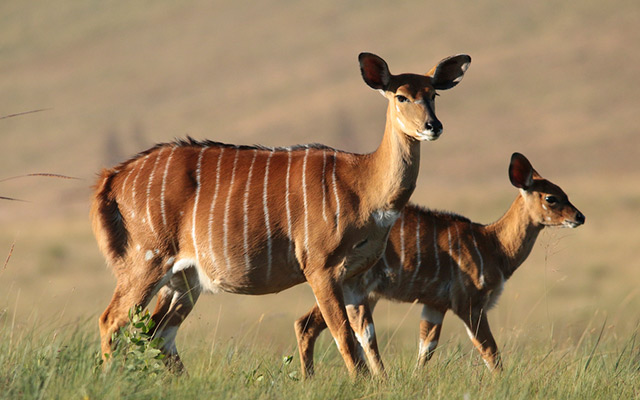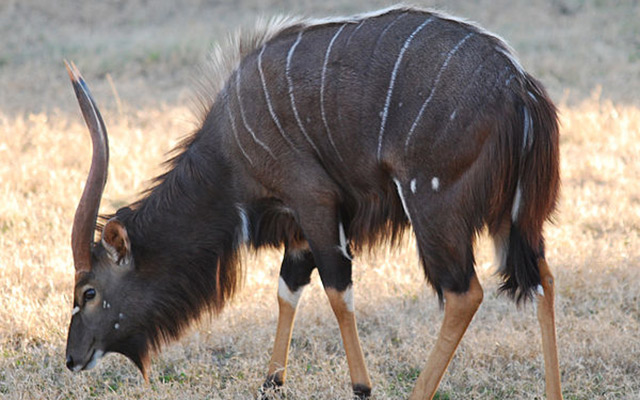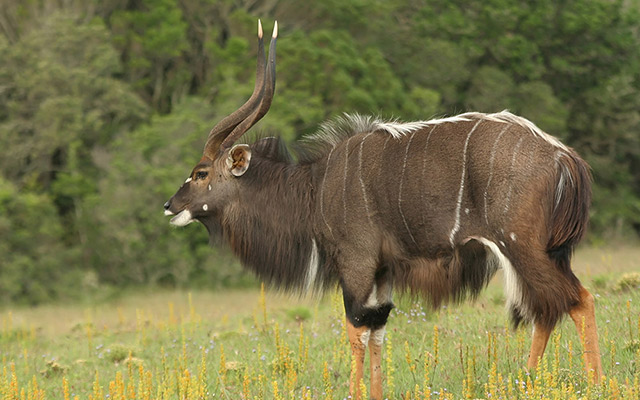The Nyala
The body length is 135–195 cm (53–77 in), and it weighs 55–140 kg (121–309 lb). The coat is rusty or rufous brown in females and juveniles, but grows a dark brown or slate grey, often tinged with blue, in adult males. Females and young males have ten or more white stripes on their sides. Only males have horns, 60–83 cm (24–33 in) long and yellow-tipped. It exhibits the highest sexual dimorphism among the spiral-horned antelopes.
The nyala is mainly active in the early morning and the late afternoon. It generally browses during the day if temperatures are 20–30 °C (68–86 °F) and during the night in the rainy season. As a herbivore, the nyala feeds upon foliage, fruits and grasses, with sufficient fresh water. A shy animal, it prefers water holes rather than open spaces. The nyala does not show signs of territoriality, and individuals areas can overlap each others. They are very cautious creatures. Old males live alone, but single sex or mixed family groups of up to 10 individuals can be found. These inhabit thickets within dense and dry savanna woodlands.
Alert and wary in nature, the nyala use a sharp, high, dog-like bark to warn others in a group about danger. This feature is mainly used by females. They also react to the alarm calls of impala, baboon and kudu.







